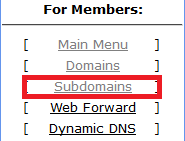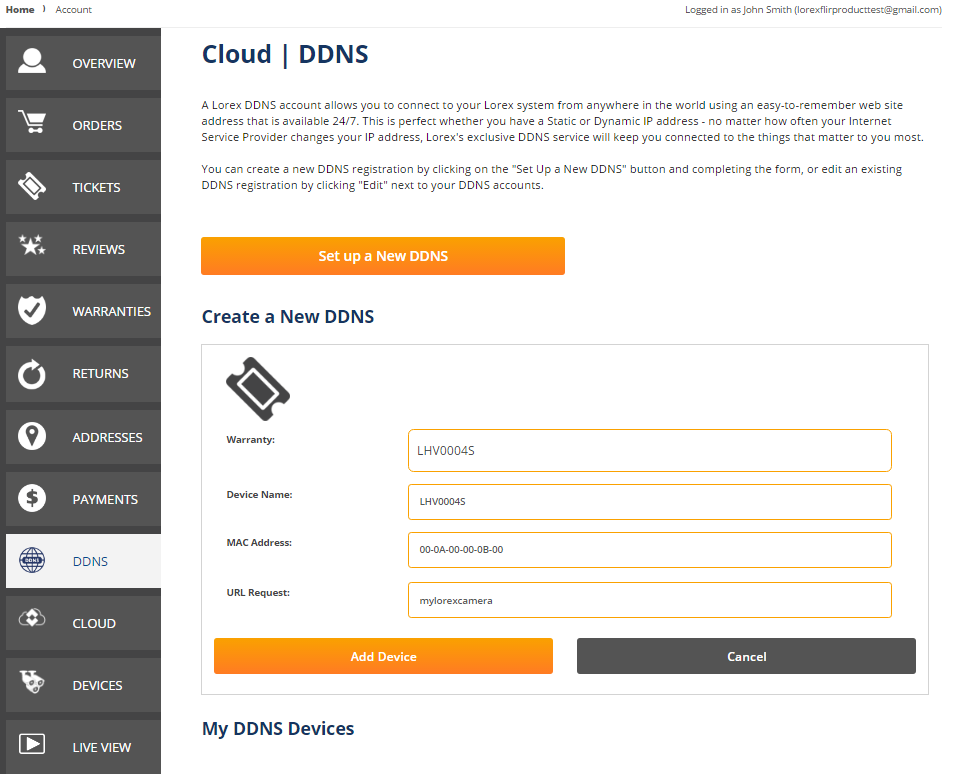Download RealDNS - Dynamic DNS for macOS 10.10 or later and enjoy it on your Mac. The best dynamic DNS update client on App Store with support IPv4 and IPv6. Internet service providers change your IP address on a regular basis, but with dynamic DNS you can keep your domain pointing at the current IP of your home server or other devices. You may register a domain name of your own (yourdomain.com) and sign up for Dynu Dynamic DNS Service for it or use a free Dynu domain name (myhostname.dynu.com). Free Dynamic DNS. Get public hostnames for your dynamic IPv4 and IPv6 addresses within seconds. Dynv6 combines your MAC addresses or Host IDs with your dynamic. We provide free dynamic DNS service. Use yourdomain.dynu.com instead of a hard to remember IP address or URL to access your computer remotely, run a personal website, access your DVR, or run a FTP, game, or mail server. Free Dynamic DNS Changes to Hostname Creation for No-IP Branded Domains How to Configure DDNS (Dynamic DNS) in a Router How do I confirm my hostname if I have a free account?:: Support Question of the Day DNS Host Types and Features No-IP Account Password with DDNS Devices How Do I Flush Mac DNS.
No-IP DUC (Dynamic DNS Update Client) Download Info No-IP DUC is a tool for keeping your IP address in sync with a specific DNS host name. If you want to run a Web/FTP server on your home computer you might want to be located not just by your IP address but also by a specific host name. The No-IP DUC is used with No-IP.com's dynamic DNS service. Dynamic DNS enables you to remotely access your computer, download files or even run your own blog / web site on your home or small business broadband connection even when connected to the internet via a dynamic IP address. No-IP DUC (Dynamic DNS Update Client) - Full description No-IP Updater is used with No-IP.com's free DNS service. This client keeps your IP address in sync with a specific DNS host name, provided by No-IP.com.
- No ip duc dynamic dns update client free download - No-IP DUC Dynamic DNS Update Client, No-IP DUC (Dynamic DNS Update Client), No-IP Dynamic DNS Update Client, and many more programs Navigation.
- Download the Windows update client by clicking the link above and saving the file. Double-click the downloaded file and follow the on-screen instructions. The installation will complete and the application will ask for your account information.
- Checked
12 / 02 / 2017 - No-IP
www.no-ip.com
/ddns-gettyimages-5c38ca0246e0fb00016fb421.png)
Free Download
Vitalwerks LLC is the parent company of No-IP which is a dynamic DNS provider for paid and free services. No-IP offers DNS services, email, network monitoring and SSL certificates Email services include POP3 email, outbound SMTP email, backup mail services and mail reflection and filtering.
| OS | Windows: 7 / 8 / Vista / XP / NT / 10 |
| Language | English |
| License & Price | Free |
| Developer | No-IP |
| Official website | www.no-ip.com |
Free Download

Free Dynamic Dns For Mac Computer
Download Free No-ip Duc (dynamic Dns Update Client For Mac
Reviewed
by moderators
Free Dynamic Dns For Mac Computers
Download Free No-ip Duc (dynamic Dns Update Client For Mac)
High quality
localization
Dynamic Dns Update
1"'`--
1
1
1
1)
1
1
1
1
Dyndns


Well done!

Warning!
Best Free Dynamic Dns
Step 1: Enable Remote Management on your Mac
You need to first enable remote access (choose Apple menu >System Preferences, then click Sharing), then select the Remote Management checkbox. You may choose to give 'All users' or 'Only these users' access.
Click Options, then select the tasks remote users are permitted to perform.
Click Computer Settings, then select options for your Mac. We will be connecting using a VNC viewer, so we need to set a password.
Step 2: Download and install VNC Viewer on your computer
Depending on the operating system of the computer you are using, you may download the appropriate VNC Viewer here. Note that it should be installed on the computer that you use to connect to the remote Mac computer. We do not need to install anything on Mac computer because it has a built-in VNC server.
Step 3: Set up Port Forwarding (Port Translation) in the router
Please log into the router website (generally at http://192.168.1.1 or http://192.168.0.1) in the remote location and go into the 'Port Forwarding' section. Add a new 'Port Forwarding' rule for TCP port 5900 to be forwarded to the internal IP of your Mac computer. To get the internal IP address of the device, you may go to Apple menu, System Preferences, then click Network. It is usually in the form of '192.168.0.**'.
NOTE: If you need to connect to several machines behind the same router, you should set up port forwarding for all these machines. Let's suppose machine 1 has an internal IP 192.168.0.4, machine 2 has an internal IP 192.168.0.10, and machine 3 has an internal IP 192.168.0.15. We can setup different external ports for different machines as shown in the picture below.
To see if the port forwarding has been setup correctly, you can use our Port Check network tool to see if the corresponding port is open. If you get a 'Success' response from the port check, then your network has been correctly set up.
STEP 4: Map your dynamic IP to a hostname
Internet service providers change your IP address on a regular basis, but with dynamic DNS you can keep your domain pointing at the current IP of your home server or other devices.
You may register a domain name of your own (yourdomain.com) and sign up for Dynu Dynamic DNS Service for it or use a free Dynu domain name (myhostname.dynu.com). You may refer to this Getting started tutorial for more information.
STEP 5: Use VNC Viewer to access your remote Mac
Download the appropriate client software and run it in the computer to keep the hostname mapped to your dynamic IP. You may also set up the DDNS service in your router if your router supports it.
You should now be able to access your Mac computer remotely using myhostname.dynu.com from the internet via VNC Viewer.
You will be prompted a window asking for a password, which is the VNC password we've set up on the Mac computer in Step 1.
NOTE: In the case of connecting several machines, for machine 1, you can use 'myhostname.dynu.com:5900', for machine 2, you may use 'myhostname.dynu.com:5901', and for machine 3, you may use 'myhostname.dynu.com:5902'.